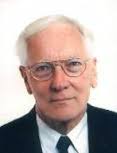About us
History
Computational modelling techniques have emerged as an indispensible tool to complement experimental methods as recognised by awarding the Nobel prize to the field of computational chemistry in 2013. According to Warshel, one of the laureates: “This is the best tool we have to see how molecules are working”. With the enormous computational power available in the forthcoming exascale era, opportunities arise to make a big step in our ambition to integrate experimental, theoretical, and computational approaches toward rational design of advanced materials.
The Berendsen Center for Multiscale Modeling and Material Design, or Berendsen Center for short, was founded in 2014 to meet this challenge. The center unites the theory and modeling groups of the Zernike Institute for Advanced Materials at the University of Groningen.
Mission
The Berendsen Center develops state-of-the-art mutliscale modeling techniques, and provides fundamental understanding as well as rational design principles for a wide range of advanced materials, all the way from inorganic devices to bio-inspired materials.
Organization
The center is directed by Prof. S.J. Marrink and acts under the umbrella of the Zernike Institute. The Berendsen Center has regular internal meetings, where the participating research groups discuss ongoing science, and organizes (inter)national meetings on multiscale modeling and computational design.
Core groups of the Berendsen Center, together with their area of expertise, are:
- Theoretical Chemistry (Prof. S. Faraji, Dr. R. Haventih) - cluster models, quantum chemical wave function methods.
- Theory of Condensed Matter (Prof. J. Knoester, Prof. T.L.C. Jansen) - exciton transport, computational spectroscopy.
- Micromechanics (Prof. P. Onck, Prof. E. van der Giessen) - molecular dynamics, finite element methods.
- Molecular Dynamics (Prof. S.J. Marrink, Dr. A.H. de Vries) - molecular dynamics, coarse-grain models.
Associated groups include:
- Biotransformation & Biocatalysis (Prof. D.B. Janssen) - computational enzyme design.

Name giver
The center is named after late Prof. Herman J.C. Berendsen, one of the founding fathers of modern computational chemistry. Herman Berendsen was Professor in Molecular Dynamics at our university from 1963 to 1999. He has made key contributions to the algorithms underlying dynamic simulation techniques1-5, and developed the GROMACS software suite and associated force fields6. GROMACS is still one of the major simulation packages to date. After his retirement, he published an influential book on hierarchical modeling7. In 2013 he received the prestigious Berni J. Alder CECAM Prize, recognizing his exceptional contributions to the field of microscopic simulation of matter.
Herman Berendsen was until his passing in fall 2019 active and showed a keen interest in the latest developments in our center. Given his invaluable contributions to the field of multiscale modeling, we as a center are honoured to carry his name, and hope to convey his intellectual wisdom in the choices we make.
- J.-P. Ryckaert, G. Ciccotti and H.J.C. Berendsen, Numerical integration of the cartesian equations of motion of a system with constraints: Molecular dynamics of n-alkanes, Comput. Phys. 23 (1977) 327-341.
- W.F. van Gunsteren and H.J.C. Berendsen, Algorithms for brownian dynamics, Mol. Phys. 45 (1982) 637-647.
- H.J.C. Berendsen, J.P.M. Postma, W.F. van Gunsteren, A. DiNola and J.R. Haak, Molecular dynamics with coupling to an external bath, J. Chem. Phys. 81 (1984) 3684-3690.
- H.J.C. Berendsen, J.R. Grigera and T.P. Straatsma, The missing term in effective pair potentials, J. Phys. Chem. 91 (1987) 6269-6271.
- A. Amadei, A.B.M. Linssen and H.J.C. Berendsen, Essential Dynamics of Proteins, Proteins: Structure, Function, Genetics 17 (1993) 412-425.
- D. van der Spoel, E. Lindahl, B. Hess, G. Groenhof, A.E. Mark and H.J.C. Berendsen, GROMACS: Fast, flexible and free, J. Comp. Chem. 26 (2005) 1701-1718.
- Herman J.C. Berendsen, Simulating the Physical World, Hierarchical Modeling from Quantum Mechanics to Fluid Dynamics, Cambridge University Press July 2007, Cambridge, UK. ISBN-13: 978-0-521-83527-5 hardback. 624 pages.
A full publication list of Herman Berendsen can be found here.
